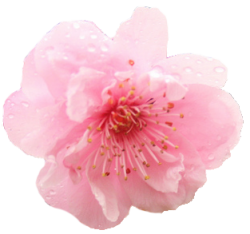Cherry Blossom

Soft, delicate and beautiful, the cherry blossom is one of the world’s most admired flowers. This admiration is particularly strong in Japan, where cherry blossoms have been held in high esteem for centuries, and garnered many important symbolic attributes in the process.
In Japan, the cherry blossom is known as “sakura”, and its importance as a cultural icon is difficult to overstate. First and foremost, the blossom is a symbol of spring, since the cherry tree is one of the first to flower when warm weather returns. In that same vein, the blossoms also represent hope, renewal, and youth, themes closely associated with the spring season itself. During the Heian era (794-1185 C.E.), the famous tradition of blossom viewing parties began in Japan. Initially practiced by aristocrats, these gatherings- where crowds of people came together to see the newly flowering cherry trees- are still a vibrant tradition in the country today.
Another essential meaning of the cherry blossom requires a little more imagination to comprehend. Since the flowers only bloom for a short time before they drop off the trees, they are considered symbols of transience. Along with snow and the moon, cherry blossoms are part of a group known in Japanese culture as “setsugekka” or the Three Beauties of Nature. Since snow easily melts and the moon constantly changes shape, all objects in this group relate to the transience theme. On a slightly less lyrical note, the flower's transience is also associated with Japan’s elite warrior class, the samurai; the death of young fighters has been compared to the short blooming time and dropping of cherry blossoms.
Based on this history, the cherry blossom has also become symbolic in its own right, representing Japan itself, as well as Japanese culture.
© Symbols.com
